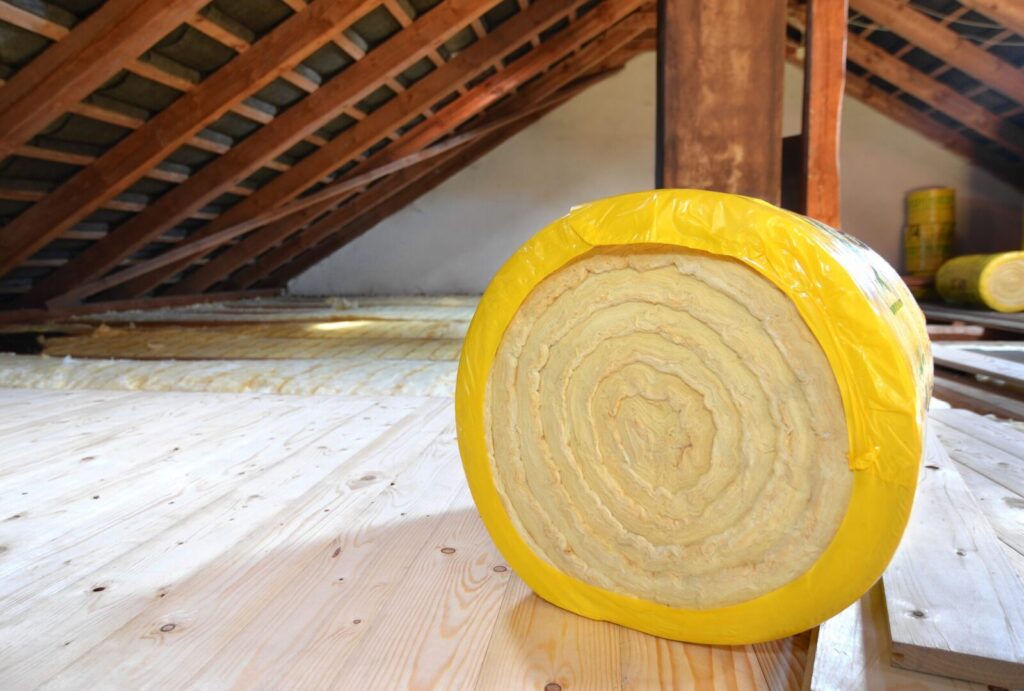High-Efficiency Attic Insulation: A Scientific Approach
Attic insulation installation isn’t just about adding layers; it’s about applying principles of thermal efficiency and heat engine theory for optimal home warmth.
The Science Behind Efficient Insulation
- Heat Transfer Control: Insulation acts as a barrier, much like the cold reservoir in a heat engine, limiting the flow of thermal energy.
- Carnot Efficiency: Insulation aims to achieve high thermal efficiency, similar to the Carnot cycle in thermodynamics, by reducing heat loss.
- Thermal Dynamics: Following the law of thermodynamics, insulation helps in maintaining energy balance, reducing the amount of heat added or lost.
Applying Engineering Principles
- Energy Efficiency: Insulation acts like a reversible engine, optimizing the use of energy and reducing waste heat.
- Temperature Regulation: By acting as a hot and cold reservoir, insulation maintains the desired temperature, minimizing the energy input required.
- Optimized Work Output: Good attic insulation ensures that your heating system works efficiently, akin to achieving a high work output in a steam power plant.
Choosing Advanced Insulation Techniques
- Material Innovation: Selecting materials that reflect the latest in insulation technology can significantly enhance thermal efficiency.
- Professional Insight: Consulting with experts who understand the complex relationship between insulation, heat transfer, and energy efficiency is crucial.
In essence, understanding the advanced concepts of heat engines, thermodynamics, and thermal efficiency can guide you in selecting and installing attic insulation that not only warms your home but does so in the most energy-efficient and scientifically sound manner. Attic insulation installation is not merely a routine home improvement task; it’s a strategic approach grounded in the principles of thermal dynamics and energy efficiency. The process, when understood and implemented correctly, can transform your home into an exemplar of energy efficiency, comfort, and sustainability.
Understanding the Role of Attic Insulation in Thermal Efficiency
The principle of thermal efficiency in the context of home insulation can be likened to the workings of a heat engine. In a heat engine, energy is transformed from heat to mechanical energy, with efficiency being a key metric. The Carnot efficiency, which represents an upper limit in efficiency achievable by a heat engine, serves as an ideal standard in thermal processes. In your home, the attic insulation acts as a mediator in the transfer of thermal energy. It ensures that the amount of heat retained within the home during colder months and the heat repelled during warmer months is optimized.
Applying the Concepts of Hot and Cold Reservoirs
In thermodynamics, a ‘reservoir’ refers to a source or sink of thermal energy. The attic insulation serves as both a hot and cold reservoir, depending on the external temperatures. During winters, it acts as a hot reservoir, retaining heat within the home. Conversely, in summers, it serves as a cold reservoir, keeping the heat out. The effectiveness of this reservoir-like function is a measure of the insulation’s thermal efficiency.
The Law of Thermodynamics in Insulation
The first law of thermodynamics, which states that energy cannot be created or destroyed, only transformed, underpins the function of attic insulation. When heat is generated within your home, either from a furnace or the natural warmth of occupants, it seeks to move to cooler areas—typically outside during winter. Insulation reduces this transfer, effectively trapping the heat inside, thereby reducing the total heat energy needed to maintain comfortable indoor temperatures.
The Second Law of Thermodynamics: Maximizing Efficiency
The second law of thermodynamics, which deals with the concept of entropy, can be related to the efficiency of attic insulation. It implies that thermal efficiency can never be 100%, as some energy will invariably be lost as waste heat. However, quality insulation can significantly minimize this loss, making the system (your home) as efficient as possible. This is similar to how an ideal reversible engine or a Carnot engine operates—maximizing output while minimizing waste.
Impact on Energy Consumption and Environmental Footprint
The reduced need for heating and cooling systems to maintain desired temperatures directly impacts energy consumption. By lowering the amount of energy input required, insulation reduces reliance on fossil fuels and other non-renewable energy sources, thus contributing to a reduction in your home’s carbon footprint. In this way, attic insulation installation is not only a cost-effective measure but also an environmentally responsible choice.
Selecting the Right Insulation Material
The type of insulation material plays a crucial role in achieving desired thermal efficiency. Materials like fiberglass batt insulation, loose-fill cellulose, and spray foam insulation each have different properties in terms of R-value (thermal resistance), air sealing capabilities, and longevity.
Professional Installation: Ensuring Optimal Performance
Professional insulation services are crucial in ensuring that the installation is done correctly. These experts understand the nuances of how different materials work and can tailor the insulation to suit the specific needs of your home, considering factors like the local climate, existing ventilation, and the home’s architectural design.
Cost Consideration and Return on Investment
While the initial cost of attic insulation installation can be significant, the long-term savings on energy bills make it a worthwhile investment. Over time, the insulation pays for itself through reduced heating and cooling costs. Furthermore, it adds value to your home, making it an attractive feature for potential buyers who are increasingly conscious of energy efficiency and environmental impact.
Maintenance and Upkeep
To maintain its effectiveness, attic insulation requires regular checks and upkeep. This may involve inspecting for any signs of damage, ensuring that there is no moisture buildup, and checking for air leaks. Over time, insulation may settle or become compacted, which can reduce its effectiveness. Regular maintenance ensures that your insulation continues to function at its optimal level, providing uninterrupted thermal efficiency.
In conclusion, attic insulation installation is a nuanced process that, when executed correctly, offers significant benefits in terms of thermal efficiency, energy savings, and environmental impact. By understanding the scientific principles behind it and opting for professional assistance, homeowners can ensure that their insulation is a valuable, long-term investment in their property’s comfort and sustainability.

